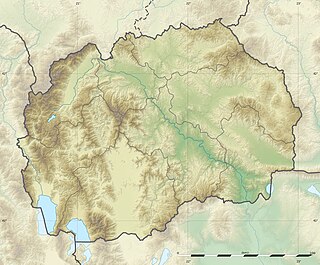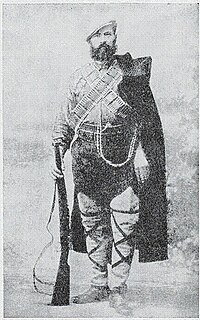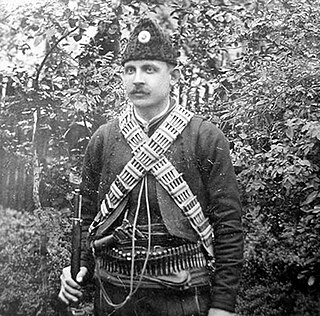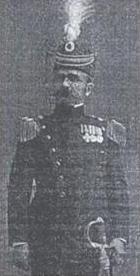 W
WMilan Aleksić, nicknamed Miša (Миша), known by his nom de guerre Marinko (Маринко), was a Serbian Chetnik active from 1905 to 1918. He was born in Raška, at the time part of the Ottoman Empire. He fled Ottoman tyranny to Kuršumlija, in the Kingdom of Serbia, where he graduated from the Military Academy as a non-commissioned officer. He joined the Serbian Chetnik Organization in 1905, fighting under Jovan Babunski and Gligor Sokolović in Poreč and on the Babuna against Bulgarian and Albanian bands. He was an assistant of the Upper Staff of Panta Radosavljević-Dunavski, Nikola Janković-Kosovski and Pavle Blažarić as a non-commissioned officer. In 1908, he worked with Vojislav Tankosić in training volunteers in Bosnia. He is regarded a hero in all wars between 1912 and 1918, during which he had the rank of lieutenant colonel. He wore an Albanian costume during battle in order to confuse the enemy. He died of exhaustion in Veliki Bečkerek, in Banat, on May 27, 1923.
 W
WJovan Stojković, known as Jovan Babunski, was a Serbian Chetnik commander during the Macedonian Struggle, Balkan Wars and World War I. Following the murder of his brother and nephew by the Internal Macedonian Revolutionary Organization (IMRO), he joined a Chetnik band and took command of Chetnik units on the Vardar River, where he and his men often engaged Bulgarian and Ottoman forces.
 W
WAksentije Bacetić, known as Baceta (Бацета), was a Serbian secret agent and Chetnik commander in Macedonia. His surname has been spelled Bacetović.
 W
WBoško Mitrović, known by the nom de guerre Virjanac (Вирјанац) or Virčanac (Вирчанац), was a Serbian Chetnik commander.
 W
WThe Fight on Čelopek or Battle on Čelopek (Bitka/Битка) was fought at the Čelopek plateau near Kozjak between the Serbian Chetnik Organization, a Serbian rebel faction, and Ottoman officers accompanied by Ottoman Albanian bashi-bozuks, on April 16, 1905.
 W
WAleksandar Marković, known by his nickname Cene, was a Serbian Chetnik commander (voivoda) in Macedonia, in the Balkan Wars and World War I.
 W
WLjubomir S. Jovanović, known as Ljuba Čupa, was a Serbian guerilla fighter, member of the Black Hand, soldier in the Balkan Wars, and journalist.
 W
WĐorđe Cvetković, known by the nom de guerre Drimkolski (Дримколски), was a Serbian Chetnik vojvoda (commander) of the četa (band) of Drimkol.
 W
WStevan Dimitrijević was a Serbian theologian, historian and pastor to Chetnik freedom-fighter in Ottoman-occupied Old Serbia and Macedonia during the beginning of the 20th century.
 W
WOn March 27, 1905, there was a fight in Tabanovce between the Serbian Chetnik Organization, a Serbian rebel faction, and an Ottoman garrison from Kumanovo.
 W
WOn May 25, 1905, there was a fight in Velika Hoča between the Serbian Chetnik Organization, a Serbian rebel faction, and Ottoman irregulars from Orahovac.
 W
WOn 27 May 1904, there was a fight on Šuplji Kamen between the Serbian Chetnik Organization, a Serbian rebel faction, and the Ottoman army under Hamdi Pasha.
 W
WSpasa Pavlović, known as Spasa Garda or Zmaj, was a Serbian Chetnik commander in Old Serbia during the Macedonian Struggle (1903–1908). He received his nicknames from his high stature and bravery, and could be entrusted with highly secretive missions. He was born in the village of Stanča near Kriva Palanka, Ottoman Empire. From 1903, he was a jatak for the Serbian bands whom he led the way in the woods and hills, and since 1904 he was a vojvoda (duke) in the Kriva Palanka area. His band defended the Kriva Palanka region from the IMRO, securing the Kriva river, which region was controlled by Serbian bands and where all villages were adhering to the Patriarchate and included in the Serbian Chetnik Organization. Spasa participated in all major battles on the left bank of the Vardar river. There, he helped destroy the local Bulgarian secret organization and Turkish (Ottoman) government. He is famed for his bravery in the battle on Paklište. After the Young Turk Revolution (1908), he returned to his village and lived a peaceful life. However, with the breakout of the First Balkan War, he joined the unit of Vojin Popović-Vuk, as the Serbian vanguard, and participated in all battles from the Serbian border to Prilep. He was wounded but declined medical care. He was killed in action in the fights for Prilep, on November 7, 1912, on the Alinački vis. He was buried in Prilep.
 W
WGolub S. Janić was a Serbian millionaire, MP, benefactor, and the most influential personality among the Serbs from Macedonia living in Serbia at the beginning of the 20th century.
 W
WLjubomir "Ljuba" Jezdić, known by his nom de guerre Razvigora (Развигора) was a Serbian Chetnik voivode in the Macedonian Struggle, and a lawyer.
 W
WBranivoje Jovanović, known by the nom de guerre Brana (Брана), was a Chetnik vojvoda (commander).
 W
WPetar Kacarević, nicknamed Pera (Пера) and Čiča, was a vojvoda (commander) of the Serbian Chetnik Organization active in the Maleševo region.
 W
WStojan Simonović, known by his nom de guerre Koruba (Коруба), was a Serbian Chetnik
 W
WMicko Krstić-Porečki, known as Vojvoda Micko, was a Serbian rebel and military leader active in the Poreče region.
 W
WLazar Kujundžić-Klempa was a Serbian Chetnik commander (vojvoda) who was active in Old Serbia and Macedonia.
 W
WEmilio Milutinović was a Chetnik voivode in Old Serbia during the struggle for Macedonia. As a subject of Austria-Hungary at the turn of the twentieth century, he was called to serve in the army but later his conscience would not allow him to continue because it went against his patriotic feelings as a Serb. He deserted and fled to Serbia where he entered the Serbian army with the rank of sergeant. From the year 1904, he was a Chetnik in the company of Đorđe Ristić-Skopljance, Vanđel Skopljanče, Rista Starački, and Vojislav Tankosić. Because he had a military education and Chetnik experience at the end of 1905, he was appointed voivode by the Serbian Chetnik Organization to head their staff headquarters in Skopska Crna Gora. Vasilije Trbić was given the task to take Emilio Milutinović to his post in Skopska Crna Gora. But they never reached their destination. On 21 January 1906, Vasilije Trbić came close to losing his entire četa of 22 men when a Turkish force together with Albanians from surrounding areas ambushed them at Čelopek. Emilio Milutinović, who survived the slaughter with Trbič and a couple of his men, was so grieved that he resigned from further guerrilla action. Later, however, he went on to participate in both Balkan Wars and the Great War as a Chetnik volunteer.
 W
WJovan Naumović was an Armijski đeneral in the Royal Yugoslav Army who commanded the 3rd Territorial Army during the German-led Axis invasion of Yugoslavia of April 1941 during World War II. Naumović's command consisted of three infantry divisions and some smaller formations. The 3rd Territorial Army was part of the 3rd Army Group which was responsible for the border with Albania between Lake Ohrid to Lake Skadar, and the Romanian and Bulgarian borders between the Iron Gates and the Greek border.
 W
WStevan Nedić, nicknamed Ćela (Ћела), was a Serbian Chetnik commander in Old Serbia and Macedonia.
 W
WKonstantin "Kosta" Milovanović Pećanac was a Serbian and Yugoslav Chetnik commander (vojvoda) during the Balkan Wars, World War I and World War II. Pećanac fought on the Serbian side in both Balkan Wars and World War I, joining the forces of Kosta Vojinović during the Toplica uprising of 1917. Between the wars he was an important leader of Chetnik veteran associations, and was known for his strong hostility to the Yugoslav Communist Party, which made him popular in conservative circles. As president of the Chetnik Association during the 1930s, he transformed it into an aggressively partisan Serb political organisation with over half a million members. During World War II, Pećanac collaborated with both the German military administration and their puppet government in the German-occupied territory of Serbia.
 W
WSava Petrović, known as Sava Grmija, was a Serbian soldier, member of the Serbian Chetnik Organization and participant in the Balkan Wars and World War I.
 W
WDragiša M. Stojadinović, known by his nom de guerre Krajinac (Крајинац), was a Serbian soldier, lawyer, politician, photographer and filmmaker.
 W
WVojislav Tankosić was a Serbian military officer, vojvoda of the Serbian Chetnik Organization, major of the Serbian Army, and member of the Black Hand, who participated in the May Coup and was accused of involvement in the Assassination of Archduke Franz Ferdinand.
 W
WLjubomir Vulović, known by his nickname Ljuba (Љуба), was an artillery major in the Serbian Army, conspirator of the May Coup, and member of the Black Hand.